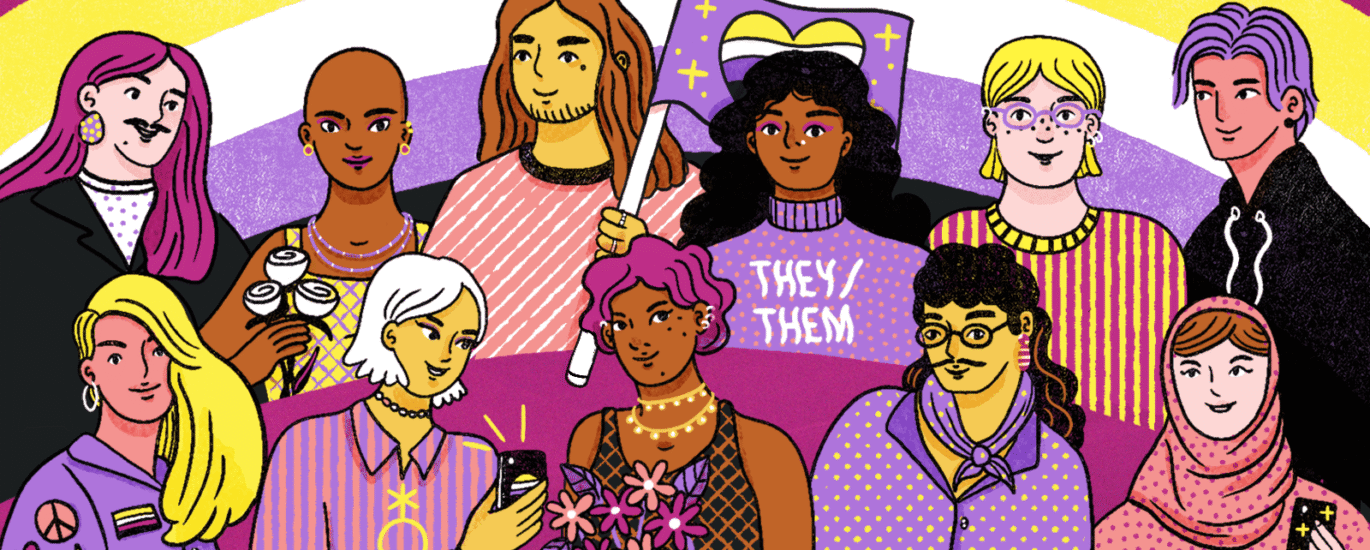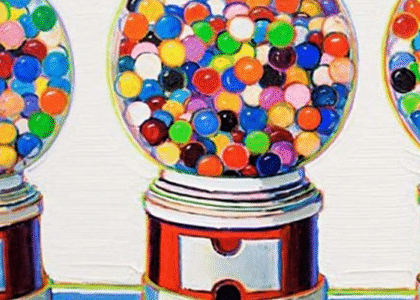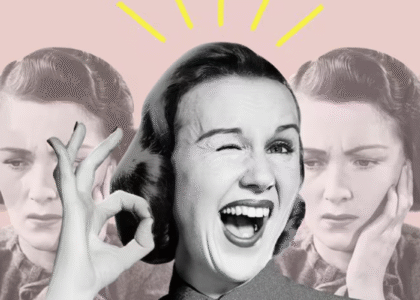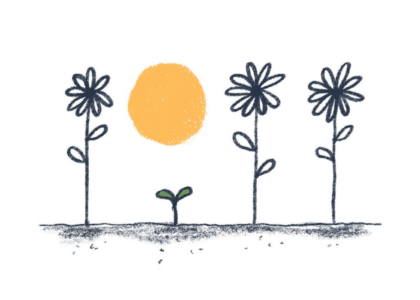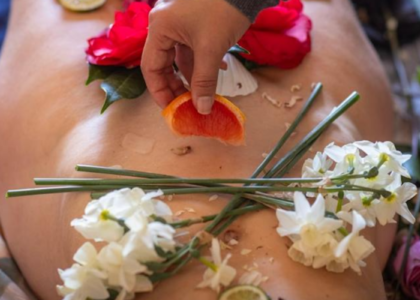“as much a part of this world as the flowers and the sun”
Breaking Down Patriarchy producer, Sam Rose Preminger, revisits stories of coming into their transgender identity and answers listener questions about transgender and nonbinary experiences, discussing bathrooms, sports, queer youth, and the fight for LGBTQIA+ liberation.
Our Guest
Sam Rose Preminger
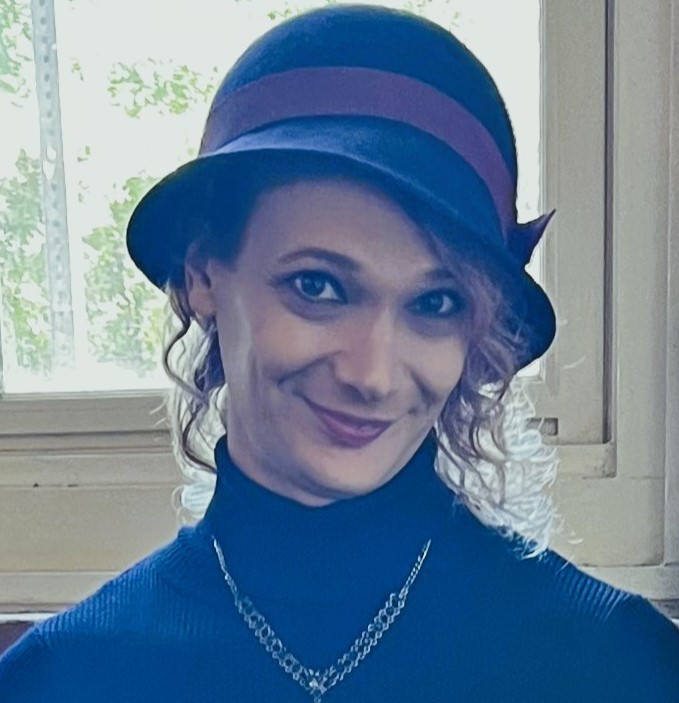
Sam Rose Preminger (they/them) is an editor and producer on Breaking Down Patriarchy. They live in Portland, OR with their partner and rescue pup.
The Discussion
Welcome to Breaking Down Patriarchy, I’m Sam Rose Preminger. As I’m sure some of you know, I’m a producer and editor here on the podcast and I’m typically quite happy staying behind the scenes, but – in honor of Pride month – Amy very generously asked me to take center stage this week to talk about you all about the transgender community. Because once again, in 2025, trans people like me are still in the cultural and political spotlight, with our rights, our safety, and even just the fact of our existence somehow still being hotly debated. So, we’re going to get into it and hopefully answer all your burning questions. In the first half of this episode, I’ll be sharing a personal essay that might be familiar to some of you – it’s an updated version of a piece I originally shared way back in 2022, during Season 2 of the podcast, where I’ll tell you all about my own coming out journey. And then stick around because in the back half I’ll be answered a whole bunch of listener submitted questions about the transgender experience. Are you ready? Great, let’s get into it…
In my childhood, I felt most at home when I was crouching by the edge of a pond, holding a net in my hands to scoop up frogs, or a stick to overturn old mossy logs and admire all the tiny microcosms underneath. The natural world, it seemed to me, was brimming with diversity, thriving on the interplay of unique creatures, each as marvelous as the next. And I recognized myself as an equal spirit within that intricate community of life. I knew I belonged, and still to this day when I imagine myself most being myself what I see is my early childhood: a slender, spectacled kid taking shelter under the leaves of sugar maples and silver pine, dappled by the summer rains of central New York.
But the reality is that these trips to the woods were an exception in my childhood. Instead, I was raised several hours south of those forests, deep in the hollow of the suburbs. And vastly more numerous than trips to the pond were trips to the shopping malls, long traffic-clogged drives across Long Island highways and through the homogeny of plastic paneled, ranch style houses that metastasized across my hometown sometime in the early 50’s. In case you haven’t caught on, I didn’t like where I grew up. Now, I will say that most of my family still lives in that area and sometimes I can see its charm — they’ve got great bagels and a good school system and such — but suffice it to say that, for a queer kid trying to understand themself, the normativity of Long Island’s culture could be suffocating.
See, from a pretty young age I started to stand out. I simply was not turning out to be the person that people expected me to be. And in this context, it’s important to know that I was Assigned Male At Birth (AMAB). All that means is that when I was born a doctor looked at my external anatomy and made a binary choice, and my parents agreed. For many years that was that. I was a boy, male, and would grow to be a man. Or at least that was supposed to be that, but even before grade school I was off script for what the world around me seemed to say a boy should be. I didn’t care about sports or cars or action figures. I wouldn’t eat meat because the idea of animals being killed, chickens being turned into chicken nuggets, made me cry. I just…wasn’t matching the masculine mold that had been laid out for me. I was sensitive, soft, and let’s be real, about as socially graceful as a giraffe on stilts.

As a result, from an early age I started to hear words like ‘weirdo’ and ‘loser’ loosely floated my direction. At best, I was praised for being unique, for marching to the beat of my own drum! At the worst moments, I was told that there was something wrong with me. That I was a freak. And then, as I got older, ‘faggot’ became the common slur for me. The environment I grew up in, the culture of patriarchy and homophobia I moved through, made it clear, in no uncertain terms at all, that I did not belong. And I agreed; they were right. I didn’t belong.
There’s a quote from the poet and playwright TS Eliot that I remember reading sometime in my youth where he writes: “I must tell you that I should really like to think there’s something wrong with me — Because, if there isn’t, then there’s something wrong with the world itself — and that’s much more frightening!”
By the time I reached high school I had thoroughly internalized that mindset. There was something wrong with me. Something off. The sense of belonging I’d felt by the pond as a child was severed, and I knew that the man-made world, the ‘real world’, had no place for…whatever I was. In those years I was riddled with depression and anxiety, oftentimes unable to go out in public, missing school for weeks at a time, terrified of being seen. I didn’t want anyone to look at my failure; what a failure of a boy I was, what a freak, how I was failing again and again to become a man like I was told I should be, like I needed to be.
Had I had the language for my identity that I have today, things might have been different. Had I had queer and trans role models, or seen people like me as anything but a villain, a victim, or punchline in the media, then maybe things would have been different. As my teenage years and high school played out, however, I’d end up trying to end my life twice before starting college. When it was finally time for me to leave home, I took my finger and traced a line across a map of the United States, deciding that that was where I would go; as far away as I possibly could. Someplace no one would know me. Someplace I could disappear. I moved from Long Island, New York to Portland, Oregon at 17 years old with no intention of ever going back, wanting to be forgotten.
I’m going to let you know now so aren’t worried: moving to Portland would turn out to be a fantastic decision for me. My life was going to get better. But before that could happen, I was going to need to reckon with my identity. I’d have to come out to myself and others and that was not going to be an easy process. Rather, I resisted it for years, trying to be anything but transgender. In my late teens I came out as bisexual. In my early twenties I came out as just ambiguously ‘queer’, but I knew I hadn’t put my finger on it yet. It was like I was trying to put band-aids on a wound that needed stitches. I had internalized so much transphobia, that the possibility of me being transgender was completely intolerable, something to be bottled up at all costs.
So before moving further, I want to take a moment to discuss where some of that internalized transphobia was coming from. And the answer is actually pretty simple: some of it came from my friends and family, sure, but the bulk of it, overwhelmingly, came from entertainment. Growing up in a heteronormative community, I’d never had the opportunity to meet an openly transgender person and so my understanding of what trans lives looked like came almost entirely from the movies and TV I watched. And what that media showed me did not look good.
For example, the very first representation that I saw of an AMAB (meaning Assigned Male At Birth) person wearing feminine clothing was in the Robin Williams’ classic Mrs. Doubtfire. In the movie, Williams plays a divorced father who attempts to sneak back into the lives of his children and former wife by dressing up as a woman and pretending to be their nanny. Hilarity ensues. Audiences laugh as Williams struggles to fit into a dress. We laugh when he jokes that he looks like a serial killer. Several gags revolve around Williams revealing his deep, masculine voice while dressed in women’s wear. And finally, the film reaches its climax when the cross-dresser is outed, being called a ‘he-she’ after having been caught using a bathroom. It’s funny…right?
I want to be clear, I loved this movie as a child and I think there’s still a case to be made for its campy treatment of gender-bending being at least somewhat progressive for the 90’s. But the fact of the matter is that, for a young transgender child, this beloved family movie taught me that cross-dressers and other gender-nonconforming people are tricksters, they’re trying to lie to us and get away with something, and the very idea of me, an AMAB person, growing up and wearing a dress was not only laughable, it was blockbuster comedy.
the culture of patriarchy and homophobia I moved through, made it clear, in no uncertain terms at all, that I did not belong
Let’s fast forward a few years. In another instance, I’m invited to a childhood sleepover where my friends and I watch another comedy classic you might know, Ace Ventura: Pet Detective. This time the movie kept its transgender character — who’s stolen a police officer’s identity in order to kidnap and kill people — a secret until the big finale, when the film’s hero comedically tears this transwoman’s clothes off, exposing her genitals, and then proceeds to violently retch, struggling to hold back vomit at his discovery. Again, this was not a one-line joke in a minor studio release. This was the climactic plot point of a film that held top spot at the box office for weeks. A film which I still hear regularly referenced fondly. And, as a child at that sleepover, I watched this trans character treated with utter disgust and contempt…all while laughing along with my friends. So what did I learn? Transgender people were untrustworthy and their bodies repulsive. And again, it was funny.
I could go on and on with more examples of transphobic media from my youth. Seriously. It was omnipresent. Friends, Silence of the Lambs, Crocodile Dundee, Ally McBeal, Sex & The City, South Park, Dude Where’s My Car?, The 40-Year-Old Virgin. The list goes on and on and on. Any time a transgender person was shown or referenced on a screen, they were a punchline or a monster — oftentimes both. And I watched it all, deeply internalizing these hateful stereotypes.

And here I want to pause and offer a quick note about the importance of representing queer characters in media, especially in children’s media. I want to make this as clear as possible: the push for representation is not about encouraging kids to be gay or trans — after all, I grew up constantly watching heterosexual cisgender characters kiss and date…and it didn’t make me straight. This is not about changing people. Representation is about making sure everyone watching, especially kids, can see characters who look and act like them on a screen. It’s about making sure queer or questioning children can envision futures themselves. It’s about making sure they know, like every other child, that they can find love in this world and are worthy of loving themselves.
I wish I could say things have gotten much better since the 90’s and early 00’s, but the reality is that our media representation of transgender people is still incredibly lacking. We’re seldom seen and, when we are represented, it’s often with dangerous inaccuracy.
In a 10-year survey of 102 television episodes featuring transgender characters, GLAAD (the Gay & Lesbian Alliance Against Defamation) found that 54% of the episodes contained negative representations of trans people, while another 35% were marked as problematic. Only 12% of these episodes were found to represent transgender characters in a fair and accurate manner. That’s about 12 episodes out of 102.
As an update, the survey referenced here was from 2002-2012. These were core years for me, my teens and early twenties, when my sense of self, my gender, sexuality, my identity – I was actively figuring these things out…while also watching lots of TV and movies. It was important to keep up with the latest trends, know jokes and quotes, and laugh along.
Unfortunately, in preparing for this episode I was unable to find any comparable data as to how our media looks in 2025. What I can say for sure is that a more recent, 2024 GLAAD survey confirms that the number of transgender characters represented in our media is going down. That might surprise you – it surprised me. I so often see complaints that there are too many of us in your TV and films. But the reality is that last year was “the second year in a row that has seen a dramatic decrease in transgender characters, down to 24 from last year’s 32.” These are the lowest numbers reported since the 2017, when we saw trans representation starting to decline. At a time when we so desperately need people to be able to see us, to gain insight through trans stories and find empathy for trans characters, these characters are vanishing from our screens. Sometimes quite literally, as in the case of the 2025 Disney release, Win or Lose, where several scenes were cut or re-edited in order to remove a character’s being transgender and represent them as cisgender instead. Let me tell you, as a lifelong Disney fan who still knows all the words at a sing-along, this one really hurt.
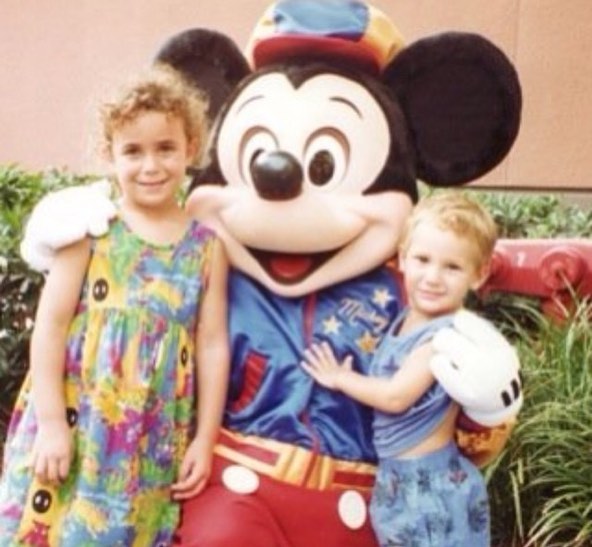
But back to our survey. In their 10-year study GLAAD also found that transgender characters, when they did appear, were cast in a “victim” role at least 40% of the time, and cast as killers or villains at least 21% of the time. That means 61% of the time trans characters appeared on the screen we were shown as the victims or villains of these storylines and, unsurprisingly, the survey also found that 61% of the cataloged episodes included transphobic slurs and dialogue.
Some of the negative representatives included:
- “CSI (CBS), which not only featured a transgender serial killer who murdered their own mother, but scenes in which transgender murder victims were openly mocked by the show’s lead characters while examining their bodies and crime scenes.
- The Cleveland Show (Fox), in which a man vomits onscreen for a lengthy period of time after discovering he had slept with a transgender character.
- Nip/Tuck (FX), which featured a storyline about a transgender woman who regretted her transition, a transgender sex worker being beaten, and an entire season about a trans woman depicted as a baby-stealing sexual predator who sleeps with her own son.”
What this survey tells us is that transgender people have been, and regrettably still are, misrepresented in media. Our lives are co-opted and sensationalized in order to sell stories and earn higher ratings, but those ratings come at a real cost for real people. When stereotypes run rampant, when trans people are reduced to victims, villains, and jokes these ideas become reinforced in viewers, and these viewers often have little other knowledge of what it means to be transgender. Worse still, these ideas become reinforced in the minds of trans youth, warping their self-perception and undercutting their self-esteem (just like they did for me). Finally, these stereotypes can be, and have been, wielded by politicians to further persecute and restrict the freedoms of the transgender citizens they’re meant to represent.
I’ll talk more about transphobia in our politics later, but for now suffice it to say that – when we consider the aggressive heteronormativity of our culture, the active misrepresentation of transgender and other queer people in media, and the near constant barrage of hatred from elected officials – I really think it’s something miraculous when any person manages to come out of the closet at all. It is so frighteningly easy for me to imagine a world in which I never made it that far.
By the time I was in my early twenties I believed — I knew — that there could be nothing worse than being transgender. The culture I’d been steeped in, been breathing like oxygen, had completely convinced me that a trans person’s life was a waking nightmare. They were destined to be reviled, abused, outcast, or worse. I knew a trans person’s life would only be one of two things: a comedy, because nothing is more worthy of derision and mockery than someone ‘pretending’ to be a different sex, or a tragedy, because nothing is more revolting and untrustworthy, more deserving of violence, than a trans person’s body. I didn’t want that to be me. That couldn’t be me. I was terrified. I was so consumed with self-loathing; I couldn’t even fathom the possibility that I would love myself one day. Instead, in my early twenties, I was disgusted by the thoughts that would sometimes well up in me. For the truths I was constantly trying to tell myself.
Our lives are co-opted and sensationalized in order to sell stories and earn higher ratings, but those ratings come at a real cost for real people
It didn’t even make sense. I knew I wasn’t a woman, but more and more I was realizing that I wasn’t a man. What did that make me? I didn’t know the word non-binary back then. The words that patriarchy had taught me were ‘fag, ‘tranny’, and worse. I shoved those thoughts, that possibility, those words, as deep down as I could. I tried to hide from myself with statements like “I’ve just got to play the hand I’ve been dealt” and “gender’s really not a big deal to me.” I did everything I could to run away from the dawning discovery. I tried to drown the truth in alcohol. At this point in my life, drinking and fantasies of suicide had become a near constant companion. In the mornings I would wake up hungover, my memory hazy, and find letters I’d drunkenly written to myself from the night before — begging myself to confront who I really am. To do anything at all. I’ll quote from one of those letters now:
Sam — this has to stop.
It didn’t always hurt this much. I know it hurts now. You need to be who you are.
Remember the pond. The frogs and deep forest moss.
Remember music. Remember the sounds of the summer rain.
I promise you, you don’t want to die.
Try to remember the rain.
Okay. So, I’ve talked a lot already about the ways our culture propagates distrust, hatred, and disgust as appropriate responses to transgender people. That was a large part of my struggle. But another part of my struggle was about knowledge, about history. At this point in my life, I knew I wasn’t a man or a woman, but I didn’t know there were other possibilities. I was defining myself by what I wasn’t, and had no clear grasp on who I was. What else was I supposed to do when I’d never heard what the word ‘non-binary’ even meant? That information had been kept from me, and it occurs to me that a few folks listening might have not been exposed to this knowledge either, so I’m going to share, real quick, some history of non-binary, or enby, people.
Let’s get a definition going first. Quoting from the National Center for Transgender Equality: “…most people – including most transgender people — are either men or women. But some people don’t neatly fit into these categories. For example, some people have a gender that blends elements of being a man or a woman, while other people have a gender that is different than either male or female. Some people don’t identify with any gender. Some people’s gender changes over time. People whose gender is not male or female use many different terms to describe themselves, with non-binary being one of the most common. Other terms include genderqueer, agender, bigender, and more. None of these terms mean exactly the same thing — but all speak to an experience of gender that is not simply male or female.”
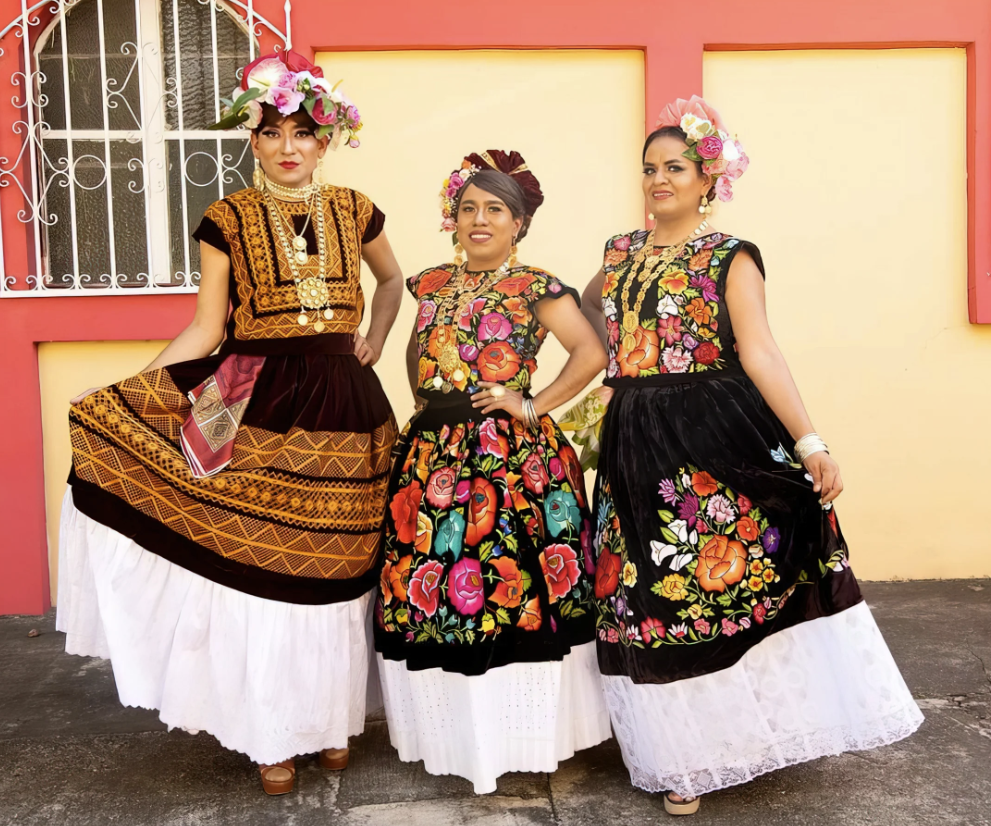
Non-binary identities are numerous, and non-binary experiences are each as varied and unique as the experiences of any other gender. There is so much space beyond the gender binary. Now that we know who we’re talking about though, the other important thing to know (and that I didn’t know until recently) is that non-binary people have always existed. We’ve been here as far back as gender’s invention and historical records of non-binary people can be found across the world.
To quote transgender archeologist Gabby Omoni Hartemann “I often find myself overwhelmed with deep feelings of nostalgia when I learn about ancient times. Human beings have lived with fluid notions of masculinity and femininity in various cultures throughout most of human history without their existences being demonized and violated.” Examples of these nonbinary identities, which have existed throughout history and into the present day, include the Hijra in India, Muxes in Mexico, Māhū in Polynesia, and numerous Two-Spirit identities across North America.
Now, you might be thinking: this sounds made up. Because if non-binary and third gender identities have existed for so long and in so many places, why wouldn’t I have heard of them before? And I think that’s a great question that’s deserving of an answer.
Some of our lack of awareness can be chalked up to cisgender bias in academia. For instance, according to Doctor Pamela Geller, a scholar of bioarcheology who specializes in the analysis of ancient human remains, “despite the fact that archaeologists regularly come upon evidence that some people did not fit sex and gender binaries, those researchers still have a tendency to diminish their relevance, relegating them to “anomalies” or “ambiguous cases.”” And then, of course, there’s also a reason we’re made to feel as if it were new. As if we were inventing it. As if it were all made up. And that reason, were I to sum it up in one word, is this: patriarchy.
You may be thinking, hold on — isn’t patriarchy about the oppression of women? Why would patriarchal structures care about trans people? Well, let’s look at that for a moment.
Patriarchy, at its very core, is built atop the belief in a gender binary. In fact, I would argue that the survival of patriarchy depends upon gender essentialism and binary gender to do the following:
- Determine and enforce a division of labor (often one where the brunt of undervalued and exhausting work falls on the shoulders of women).
- Regulate the behaviors, appearance, and value allotted to each gender.
- Claim that these social categories are natural and inviolable.
To put it another way, patriarchy relies on the rigid division of all people into two categories in order to situate one category — men — above the other — women. This means that the very existence of transgender and other gender-nonconforming people would challenge that power structure…and we are punished for it.
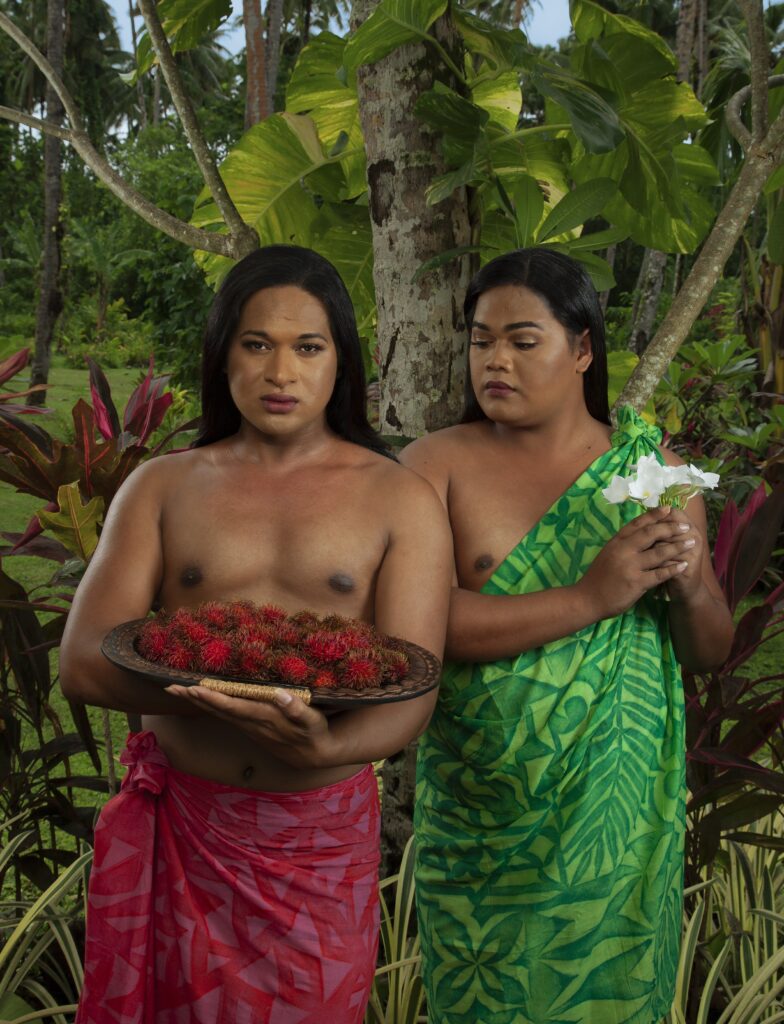
Our political leaders, faith leaders, and others paint us as predators and enemies to women, encouraging oppressed populations to fight amongst ourselves.
Our nation’s laws target trans people, especially trans youth, with draconian restrictions on their rights to access things like lifesaving healthcare, safe spaces, or even their access to the bathroom.
Our media represents trans people as deceptive deviants, villains, victims, or as the punchlines to hateful jokes.
In short, the systems of patriarchy have historically, and are in this very moment working to silence, and if possible, erase the existence of transgender people.
Throughout our history the gender binary has been treated as immutable, codified in law, enshrined in religion, and aggressively enforced by a male-dominated culture. And yes, most often this binary is wielded as a bludgeon against women, restricting their freedoms and social roles in favor of men’s dominance, but the transgender population is enduring constant collateral damage from these patriarchal norms. I will say that again: regardless of your personal beliefs on gender, the fact is that the gender binary has historically been and is still today used as a tool for enforcing patriarchal norms. It is used as a weapon against women, and its impact greatly injures trans people as well.
With this in mind, it’s no wonder that transgressions against this binary system have been erased from our cultural memory. Knowledge of transgender people has been carefully concealed and eradicated by patriarchy for centuries. It’s the reason that the Nazis burned over 20,000 books on sexuality and gender during WWII, it’s the reason that British colonizers attempted to eradicate the gender-nonconforming Hijra population in occupied India, and it’s the reason that the Trump administration erased all mentions of trans people from the White House’s website and cut off our access to receive properly gendered passports. Trans erasure (just like the erasures of women and people of color), is not accidental – it is a tactic used to protect patriarchal institutions. By creating a cultural narrative that transgender people have no past, the patriarchy makes its argument that we should have no future become more palatable. They convince trans people that we should be grateful if we’re permitted to exist in ‘their world’ at all. And convince all of us that the gender binary is absolute, unchangeable, and neatly and ‘naturally’ divides society into powerful men and the women they preside over.
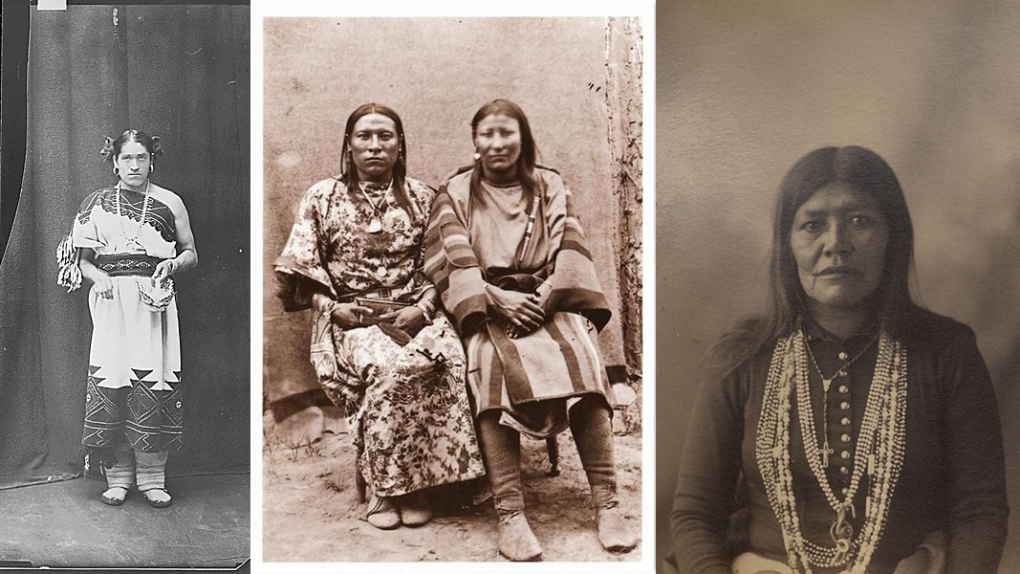
Fortunately, however, as increasing numbers of people come forward to challenge this binary, to share their stories and try to correct some of the damage our media and other institutions have wrought, that patriarchal narrative of two stringent genders is beginning to crumble. We have a long, long way to go. There is so much work ahead of us. But it’s possible to see some light at the end of the tunnel, to imagine futures where these cruel systems are little more than embarrassing relics of the past.And I’m happy to say that — with the support of friends, family, and partners — things did get better, at least for me.
In my mid-20’s I came out of the closet and into my identity as a transgender person, and anyone whose known me will tell you that I’m happier today than I’ve ever been before. Since coming out, life has only gotten better. I’m finding peace within myself. Acceptance of myself. I’ve been finally falling in love with myself. So many of the internal struggles I spent my younger years wrestling with have washed away, and I’m happy to be in the process of healing the injuries that went deeper. And yet, now living as an openly non-binary person, while many internal struggles have resolved I’m suddenly faced with all manner of external challenges. However high I hold my head up and eagerly I try to engage with our world, it is often not a kind place for transgender people.
It takes practice and thought and care for transpeople to move through this world that patriarchy has created. To quote non-binary activist and author, Alok Vaid-Menon, “the days I feel most beautiful are the days that I am most afraid.” As transgender people, we have to consider what streets we can walk down. What clothes it’s safe to wear. What bathroom we won’t be a target in. And if we make a misstep, there can very very real consequences. Sometimes those consequences occur regardless. Every transgender person I know has been threatened with violence, and most have experienced it. Even in my progressive city, multiple transgender women have been murdered without consequence. Walking down the street it is almost a guarantee that I will attract stares, if not harassment, from people I pass by. There is still the issue of trans misrepresentation anytime I turn on my TV, and if I dare look at politics, I’m buffeted by a seemingly barrage of hate.
By creating a cultural narrative that transgender people have no past, the patriarchy makes its argument that we should have no future
To put it simply, there are far too many anti-queer and anti-transgender bills either active or under consideration across the country. When I first wrote this essay in 2022, there were ~238 anti-LGBTQIA+ bills being considered across the country. That number seemed frightening at the time, but as I’m speaking now in June of 2025, that number has grown to a staggering 920 bills targeting trans people explicitly; 112 of which have already passed. That escalation is jaw dropping and utterly unparalleled. It is the highest incidence of anti-LGBTQIA+ legislation being introduced in American history to date, though the number has grown dramatically in each of the past five years. All of these bills target trans people explicitly. They include everything from demanding life imprisonment of doctors who proscribe gender-affirming care, to forcibly outing transgender children in schools. In fact, the majority of these bills are clearly aimed at queer and questioning children, with over 39% of trans youth now living in states where gender-affirming care has been banned.
While many of the bills I reference here won’t become laws, many of them will, 112 of them have already passed, and more than this: the very fact that we so actively debate transgender rights in the halls of our government carries a serious toll. Mental health experts draw a direct line between statements made by politicians and individual wellbeing. According to Dr Adam Jowett, the chair of the British Psychological Society’s Sexualities Section, “There is strong evidence that minorities experience greater levels of stress when their rights are being debated.” We can see this in the data, with the Trevor Project – our nation’s leading suicide prevention hotline for queer people — reporting a 700% increase in calls to their crisis lines on Nov 6th 2024, the day after Donald Trump’s re-election. I can also attest to the effects of this stress myself. As many other marginalized people know, it is exhausting to watch, after countless centuries of our ancestors’ struggling for liberation, as small homogenous panels of people – overwhelmingly straight, overwhelmingly cisgender, overwhelmingly male – debate whether or not my community should be allowed to have rights.
Before wrapping up, there’s one last story I’d like to share. I’m going to share a more recent story. So this was back in March of last year — my partner and I had flown down to California to meet my sister and my amazing kid nephews for a few days in Disneyland. Remember how I mentioned earlier that I love Disney? I was so excited to get to spend time with my family in this place that’s always lots of fun and most of all, to be included in making some vacation memories with my nephews. And by and large, it was a fantastic trip – we ate giant pretzels, we rode the Millenium Falcon ride, my older nephew’s favorite, again and again and again, it was a blast. Until, during one of our last days visiting, I got a little too comfortable and went to use the bathroom by myself.
Now, some listeners might be wondering: what’s the big deal? You went to the bathroom by yourself, like most folks do everywhere everyday.

Well, here’s the big deal. A 2013 survey from UCLA’s Williams Institute found that nearly 70% of trans people had experienced negative interactions in public facilities — from dirty looks to snide comments to physical violence. I know that this data is somewhat dated, and I apologize that more recent studies aren’t available at this moment, but honestly, based on my own experience, I’d be shocked if that percentage hasn’t gone up in the years since. Consistently when using unfamiliar public restrooms, particularly outside of my small progressive bubble, I find myself subject to negative interactions. It happens easily twice a year; more if I travel. Harassment and assault in public bathrooms are a constant risk for trans people. This is the reason that transgender people like myself run into problems with dehydration and urinary tract issues. We are literally afraid to use the bathroom…although from the popular cultural narrative around trans people and bathrooms, you might think otherwise. To summarize simply, all of those hateful stereotypes we discussed earlier — remember the one’s where transgender people are presented as liars and villains — that all gets blended with politics here in some truly malicious and misogynistic ways.
The popular story is this: men are dressing up as women in order to gain access to women’s restrooms and assault them. This is why, as of the moment I’m writing this, two states – Utah and Florida – have adopted bathroom laws making it a criminal offense for trans people to use the bathroom of their authentic gender. My mother lives in Florida and routinely asks why I won’t come to visit her. I don’ know what to tell her anymore. This fear-mongering around restrooms is rhetoric we hear from political leaders relentlessly; that bathroom bills regulating who can use which facilities are necessary to protect women and children from “sexual predators”. Despite this, however, as of the date of me recording this essay there has still never been a single reported case of a trans person assaulting someone else in a public facility.
I want to emphasize that. There’s never been a single verifiable instance of a trans person attacking someone else in a public restroom. To be honest, I did not know this before doing the research for this essay. I’m embarrassed to admit I had heard the myth of transgender predators so many times that I thought it must, to some extent, be true. But it isn’t true. In fact, it’s almost an identical twin to fallacious arguments that were once used to advocate for things like racial segregation: it’s the same old claim that (white) men need to defend ‘their’ women from dangerous outsiders. It’s an argument grounded on fearmongering, prejudice, and the treatment of women as a helpless social resource needing to be governed for their own protection. And, alarmingly, it’s an argument that still holds a great deal of power, making bathroom trips a constant nuisance for many transgender people.
I’ll break it down for you. Ordinarily using a public bathroom looks something like this for me:
Step 1) Wait outside until I don’t see anybody go in or out for a few minutes.
Step 2) Hurriedly step in, head down to avoid anyone seeing my face, and rush to a stall.
Step 3) If anyone else is in the restroom already or enters, wait in the stall for them to leave.
Step 4) When I’m certain the room is empty, scurry to the sink, scrub my hands as quickly as I possibly can (and carry disinfectant just in case I don’t have time). Get out of there immediately; no time for checking the mirror.
After several years of being openly transgender, I have this routine down to an art. But on that sunny March afternoon I wasn’t at my local bodega or a friendly Portland café; I was in a crowded theme park filled with strangers. Either way I chose, I’d have to be seen. There’d be no hiding. I didn’t want to make the binary decision, but my body was giving me no choice. Now, some listeners might notice that this story sounds alarmingly similar to the story I told back in 2022. And it is. Unfortunately, what comes next is an all too common occurrence.
Back in the moment, I queue up for the women’s room, my thinking being that 1) it’s the longer line and thus the more respectful one to wait in, and 2) my outfit looks a lot more like outfits in this line than the other. As soon as I stepped into place among the women, I started questioning myself though. The woman in front of me shuffles, placing herself between me and her daughter…but maybe she’s just getting her kid ready to be fast? To keep the line moving? I try to convince myself it’s not about me. If anything, she’s just being considerate, but…too late, the anxiety inside me has already started to seep. Are people looking at me? Is it in my head? Maybe they just like my necklace? My hat? More women queue up behind me and I can feel eyes scrutinizing me head to toe. A man exits the other restroom and walks past, pausing to glare at me in the women’s line. He looks angry. His shirt has an American flag. Was I in the wrong line? I’d use the nongendered, accessible restroom, but I can see a queue of folks with mobility aids and toddlers waiting there already. Someone in the line clears their throat. I glance around me and no one will meet my eye. My heart starts racing…
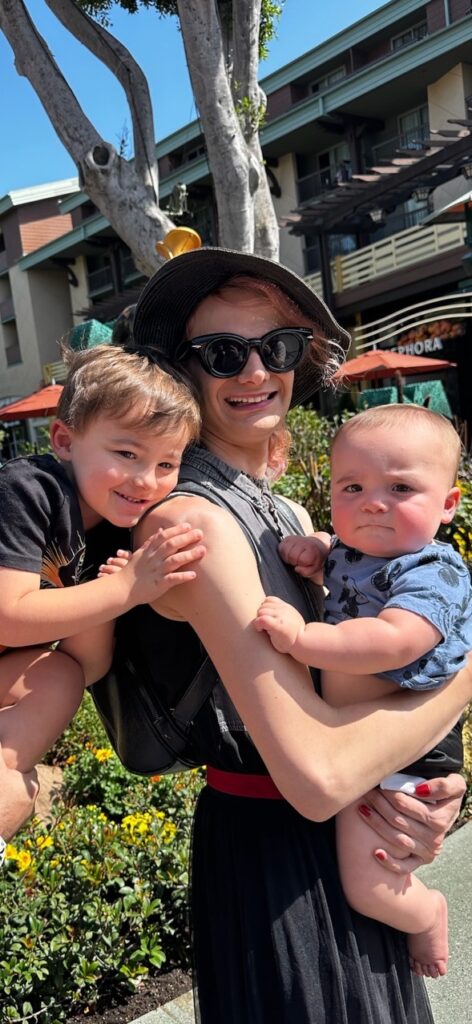
I slipped out of that line with my head kept down, hurrying over to a quiet corner for a moment to steady my breathing. I assure myself everything’s okay…but my family is waiting for me to get back. Okay, I say to myself, we’re doing this. Men’s room it is.
In and out. It’ll be quick. I straighten a wrinkle in my skirt. Here we go. Walking through the threshold, I’m buffeted by a buffet of terrifying facts and distressing memories that rush to mind. Detailed accounts of assault. Videos of trans people beaten and dragged out of bathrooms. Disneyland is a safe space, I remind myself. The most magical place on Earth. I know I probably won’t be attacked here, but hate speech, despising stares, or even a light beating are still all on the menu as far as my amygdala’s concerned. I try to hurry for a stall, but inside there’s a line of men waiting, and urinals…well that just seems like asking for trouble. I take a spot in the line, occupying as little space as I possibly can and staring at my shoes like they’re the most awe-inspiring sight on earth. Finally, mercifully, a stall opens and hurry inside, then, a moment later, I’m on my way out. I made it. I’m halfway to the door when I hear the words “Faggot. Can’t you leave our kids alone?”
My heart cracks. I hold it inside. I return to my family all smiles and never mention this encounter, not once before this moment I’m sharing with you today.
I had tried so hard to find a solution to this bathroom issue like it were some sort of binary puzzle box. I just wanted to be safe and respectful of the people around me, and for heaven’s sake I just wanted pee, but couldn’t do that without offending this stranger. Despite the countless hours I’ve spent working and volunteering as a children’s educator and entertainer. Despite being there that day with my family and only wanting to cherish time with them; I’d somehow become a threat to this stranger and their kids. So casually labelled as a predator, a villain, a freak. I was right back in the worst of my adolescence and I knew, I knew I didn’t belong… But here’s some good news: we can change this reality. This doesn’t need to be the future for today’s queer youth.
When I was a child, still catching frogs by the side of that pond, I believed I was a part of the world. As natural, essential, and valuable as a leaf on a tree or a fish in the stream. In the course of my life the forces of patriarchy did their absolute best to strip that belief away from me. To tell me I was abnormal, unnatural, unwanted and without worth. I am still bombarded by these messages nearly any time I step outside or look at my phone. But at least for today I can let those hateful slings ricochet off my self-love. Today I understand that patriarchy is a social construct, not the all-encompassing reality it pretends to be. Who cares if its oppressive systems have no place for me? Today I know I am as much a part of this world as the flowers and the sun, as all of you listening and any other human to walk the earth, and all of us deserve a world where we can blossom and shine. I believe we can build that world together, but it starts with breaking down our barriers, our binaries, and our mistakes.
Q&A
Around this same time last summer I invited BDP listeners to send me their questions about my experiences and thoughts as a transgender person, and I received lots and lots of wonderful questions from you all. But, flashforward to nearly a year later and I still haven’t offered you a response. I wish I could say I simply forgot. That I got busy, got distracted, and haven’t had these questions lingering in the back of my heart. But that isn’t the case – I haven’t been too busy, I haven’t been distracted. The truth is, I’ve been scared. As last year crept closer and closer to the presidential election, it became increasingly apparent that the republican presidential candidate, along with many running on similar platforms for lesser officers, were turning their attention, their resources, and their malice towards trans people, towards my people, towards me. The political ads became increasingly boldfaced and vitriolic, and the culture followed. I couldn’t open social media without seeing people loudly debating my right to exist. I began to hear dog whistles and slander in everyday conversation, even among my progressive community. During a time of wars and genocide, a time of grotesque wealth disparities, climate collapse, and school shootings, it was somehow trans people’s right to use the bathroom, to serve our country, to compete in games, or simply to exist that was being made a national priority – against a backdrop of more urgent needs, it was somehow our tiny minority that was being centered in the political spotlight. And I got scared. I withdrew. And the situation only got worse. Trump won the election. The rhetoric became more and more explicit, with more and more people no longer ashamed to hate us publicly. As we’ve already discussed, the legislation against trans people skyrocketed. The calls to queer suicide prevention hotlines spiked as well and my heart shattered for all those who couldn’t make that call. I had panic attacks. I started speaking quietly and fearfully to my partner, in private moments, about where we would flee to. Should we leave the country? Should I consider de-transition? Try to pass in public? Should I buy a weapon? A gun? I stopped speaking at public events as I had for years prior. I stopped going out altogether. I fell silent. And for this cowardice I am truly and deeply sorry. I’m sorry to all of you who sent in questions and have been left too long awaiting answers. And above all I’m sorry to my queer community, and to all our nation’s incredible queer and questioning youth, for allowing myself to cower.
But then, in only these recent weeks, I began to follow some old advice I was raised on. It’s advice that comes from a hero of mine, Mr. Rogers, or Mr. Roger’s mother to be exact since he once told us, quote “When I was a boy and I would see scary things in the news, my mother would say to me, ‘Look for the helpers. You will always find people who are helping.”” And so I have. I’ve looked to transgender leaders, like Representative Zoey Zephyr, who’s continued to represent both her district and the trans community at large as she fights tirelessly against the torrent of anti-trans legislation. I looked to all of the incredible, beautiful and brave trans youth in my community, who are continuing to speak out and write and protest while still staring down the worst of the news and their social media and the derision of their own peers. And, of particular note, I looked to an ally we all know, Amy McPhie Allebest, who has never ever wavered in using her platform to speak out on behalf on her queer siblings to make sure that we know we are loved. And so, with these examples of courage, I’m finally here, ready to sit down in front of the camera and answer your questions. Thank you for your patience.
As a small note before we dive in, I want to clarify my own gender identity. I am a transgender nonbinary person. Transgender because my gender does not align with the one I was assigned at birth and raised with. Nonbinary because I find myself existing nearer to the center of the gender spectrum, or, in my more daring moments, outside the spectrum altogether. Because of this, I use the pronouns ‘they/them’. I also identify as transfeminine. When I say this, I mean to say that I was assigned a place on the masculine end of the gender spectrum growing up, and have since moved towards a more feminine identity, therefore I’m trans-feminine, I became more feminine as I came into myself. Perhaps it’s because of this that nearly every question I received relates to transwomen. But I do think it worth pointing out for us all that I received not a single question relevant to transmen or other transmasculine people, and I don’t think this a coincidence. While the crosshairs are on the trans community at large, the center of these sights are truly on transwomen. Transmen are often relegated to an afterthought or utterly forgotten, as our culture continues to fixate on the denigration of women, regardless of their birth sex. Again, I don’t think this is coincidental. Patriarchy at its most fundamental level depends upon the denigration of women and anyone who embodies feminine traits. This is why gay men have historically been a political and media obsession more so than gay women, and why transwomen and other transfemmes in particular are victimized today. So while I’m going to answer these questions which focus on the transfeminine experience, my whole heart is also with my transmasculine family, and with all of the ciswomen for whom my people have become a convenient proxy.
Now, let’s finally get some of these questions answered, shall we?
Q: “I’ve long wondered …When someone moves to expressing/living as a woman, how do they define what is “woman”? If it is long hair/makeup/high heels, that is problematic, isn’t it? How can we honor the lives of transgender people AND deemphasize the emphasis on gender/sex to so much of everyday life (which I’d prefer to do. I think we’d all be healthier for it).”
A: Thanks for this question, Lael. To answer it, I’d begin by asking you the same question back. How do you define what a woman is? Is it the anatomy you were born into, and if so, would you cease to be a woman if your body changed? If, let’s imagine for a moment, you were one of the countless women who have had to undergo a mastectomy? Or like my mom, a hysterectomy? Would you cease to be a woman? Of course you would still be a woman! Because it’s who you are. Because it’s something essential to your identity, to your spirit. It runs deeper than what you were taught or what your body looks like or how you get dressed. So no, it isn’t high heels and long hair that make you a woman, just as it isn’t my makeup or hair that makes me who I am – those things are just the icing on the cake, elements of our gender presentation. Our gender identity – that’s something we harbor deeper inside, and something each of us only knows for ourselves.
If you woke up tomorrow in a different body and someone told you you were a man, would you believe them? I suspect not. And that same inner knowing is what transgender people all across the gender spectrum feel. We know who we are in our gender just as surely as we know our hearts and spirits, as surely as we know whether we prefer chocolate or vanilla, as surely as we know who we love and what that love feels like. This is how personal and deeply felt gender is, and perhaps you haven’t had to recognize that same surety with your cisgenderness simply because nobody’s asked. So again, I ask you, how do you know you’re a woman?
Now, as for how we can honor trans people and de-emphasize gender/sex in our culture, I have to tell you, respectfully, we disagree here. I don’t believe a future with less emphasis on gender is the goal. Speaking for myself and for the trans folks I spoke to in preparation for this video, none of us dream of an agender future. Rather, we dream of a future where a person’s gender can be as simple as a binary or as personal as a fingerprint, and all of these identities are respected and celebrated. We dream of gender freedom and diversity and joy. But, if you really really want to know why so many transfemmes like me tend to wear heavy makeup and grow out their hair, I’ll tell you it’s not only a matter of leaping deep into the gender we’ve been long denied, but it’s also a matter of safety. Simply put, the more likely we are to pass as our authentic gender, the safer we are in public spaces. So that makeup quite literally becomes our armor. Our sometimes exaggerated high-femme gender presentation is a way of signaling, hey – I belong in this space. Of blending in if only to shield us from harm. Believe me, on the rare days when I go out with no makeup in a dress, using either bathroom becomes a whole lot scarier. Glamming myself up helps keep me safe, and you know what, it’s also kind of fun!
Q: “I care about a 15 y/o who wants to transition m-f. They believe it will help their severe depression & anxiety. In the state of Tennessee, a 15 y/o does not have access to puberty blockers or other affirming medical interventions. I believe they will benefit from therapy and learning skills to cope with the anxiety & depression. Should this person seek medical interventions in an affirming state or continue working on the Depression and Anxiety?”
A: First and foremost, my whole heart goes out to this young person. I can’t even begin to fathom how difficult it must be to reckon with your gender identity as a teenager in America today. I only narrowly survived that journey myself during a comparatively far more tolerant time in the 90’s and early 00’s. This said, I would hesitate to recommend medical intervention to anyone as a first step or really ever as a treatment for depression or anxiety. For some brief context, I’m a person who’s lived their entire life with a diagnosed anxiety disorder as well as chronic depression. And while I am happier today than I’ve ever been, transition did not cure me of those afflictions. I’ve had to seek help for managing these lifelong mental health concerns on their own, and learned to manage them over the years with much love and professional support. And, transition has made my life incomparably better in countless way, but it was not a panacea for these underlying conditions. Please, if you or someone you know is struggling with anxiety and especially with depression, seek help.
we dream of a future where a person’s gender can be as simple as a binary or as personal as a fingerprint, and all of these identities are respected and celebrated
Now, as for this young person’s journey with gender – which I sincerely hope has been coming along well since this question was asked – I’d start by encouraging you not to panic! I promise there’s plenty of options for gender-affirming care post-puberty, so there’s no need to leap towards hormone blockers or other intervention until you’re sure it’s the right path for you. Instead, I’d encourage this person to first experiment with their presentation and with their inner sense of self. Maybe start trying out new pronouns with trusted allies and with yourself in the mirror. Maybe try a new name if that feels right. Don’t be afraid to try on genders; it can really be lots of fun and no one else needs to know! You can also play with your presentation, with clothes and hair and makeup and even the way you move and hold yourself. Find what feels natural, what feels right. Then, when you’re confident you know who you are and who you’re becoming, have a conversation with your medical provider about gender-affirming care that’s right for you. If necessary, consider relocation to a state or country where that care is more readily available.
Honestly, I’d give this same recommendation to anyone listening who hasn’t gotten to question their gender before. Even if you’re sure that you’re cis. Try out some other options. Put on some makeup. Put on a fake mustache. Try some clothes you weren’t told to wear. Call yourself by a different name or pronoun. Modulate your voice. Find what feels good for you. No matter what you’ll walk away more assured of who you are, or with a brand new facet of your identity to explore. There’s truly nothing to lose!
Q: “When trans women claim they’re the same as women who grew up as female, I understand why TERF women bristle at that. It’s like appropriation. And as far as I understand, that’s why the trans community is mad at JK Rowling. (I’m not really up on that controversy, if you’d like to address it.) My question here, after all this lead-up is, why is the trans community insisting on trans women being called “real women” and not “trans women”?”
A: I’ve never in my life encountered a transgender woman insisting on being called a ‘real woman’ instead of being called a ‘transwoman’. I truly just don’t know where that allegation is coming from. What I do see is people of all genders insisting that transwomen are women. End stop. We can be both trans and real. So I wonder, do you really have a transwoman in your life claiming to know everything about the cisgender experience? I’ve personally never met such a person, and all the transfemmes I know, myself included, would never make such a silly claim. Those assigned female at birth have their struggles, and those transitioning face a totally different set of hardships unique to our lives. All of us struggle against the patriarchal structures that repress us, each in our own way, and my only wish is that we should be allies in this struggle, each from our unique background, and all of us equally valid or, as you put it, real. This is not a matter of us being the same, and I again, know no trans people claiming such a perfect parallel. Rather, this is a matter of all of us recognizing each other’s unique identities and circumstances, but coming together with acceptance, with validation, and with the shared struggle for our equal rights in our culture and under the law. If you do know transfemmes and transwomen claiming otherwise, then perhaps this is a personal conversation for you to have with them directly. But otherwise, I assure you, we can all be a bit different and there’s no deficit of ‘realness’ to go around.
As for she who must not be named, I can only tell you how utterly heartbreaking her vitriol against the trans community has been for me. I grew up a total Potterhead. I was in line for every book release and have cherished memories of staying up all night with my sister to see who could finish the book first. Now, at the start of Pride month 2025, these memories have turned bitterly painful as the author has announced that the money she made off her franchise will be funding a new organization advocating for stripping transgender people of our liberties. It’s been utterly devastating, and I regret that I will never be able to look at that once beloved wizarding world the same. The question I keep simply asking is what our community has ever done to her? There’s no answer I can fathom which would ever make it make sense.
Q: “Are nonbinary people sometimes trans and sometimes cis?”
A: Short answer, yes! We are sometimes trans and sometimes cis, though I’d say that the number of nonbinary cisgender people is considerably lower than those who transitioned. Let’s break it down. Sometimes a child is born with anatomy that defies the binary and are then raised as intersex and/or nonbinary – this could be someone who identifies as cisgender and nonbinary. Sometimes parents also choose to raise their children without an assigned gender and sometimes those children grow to embrace that nonbinary identity; they too could be cis and enby. In short, if somebody was raised nonbinary and remained nonbinary, they might consider themselves cisgender nonbinary because no transition occurred. On the other hand, most nonbinary people, like me, were raised with a binary gender and later had to discover their identity on their own, transitioning to it at a later date; thus making us trans-nonbinary. At the end of the day though, I’d encourage you to not get too caught up in these micro labels. Just get to know the people around you with an open heart, show them they’re safe and believe what they say, and I promise they’ll show you who they really are.
Q: “What topics of conversation are appropriate to get to know a trans person? Or is it better to avoid talking about their gender experience until they bring it up?”
A: I love this question because it tells me this contributor is looking for respectful ways to get closer to the trans people in their life Yay! As for my answer, I’d encourage you to really just asses the individual relationship at hand. Should you bring up a person being trans on first meeting them? No, probably not. You probably also shouldn’t ask them about their childhood traumas or their favorite sexual position – these are just odd and invasive topics to bring up with a stranger. Get to know them just like anyone else! Unless the topic of conversation is particularly relevant to trans issues, I’d say follow their lead. If they bring it up, great, talk about it. If they don’t, they probably have other things on their mind. I assure you, even as a very openly transgender person, I rarely want to chat about my gender identity. I’m sure this podcast might make it seem otherwise, but really, it doesn’t come up much in my day to day life. There are just so many other interesting things to talk about!
Now onto the next question, and this one’s a tough one. Our submitter asks “I have a friend who is a transgender woman. When I learned she had he jaw broken in 6 different places by men because she used a public bathroom, I was horrified. I’d like to know, Sam, what you have to do day to day to stay safe. Or maybe this hasn’t been an issue for you? Also what support did you receive and are you receiving in your journey. What’s helpful and what’s not helpful?”
Question asker, I am so so sorry that your friend went through this. She didn’t have to suffer this injustice, and our world should be better by now, it really really should. I wish I could say the fear of these sorts of violence hasn’t been an issue for me, but it’s an issue for all queer and transgender people. Safety concerns need to taken seriously. In terms of my own precautions, I’ll say that first and foremost I live in one of our country’s more trans-friendly cities and that’s very purposeful. As a closeted teen in a heteronormative environment, I stayed closeted until I could relocate someplace safer. Not all trans people have this option, but I’m grateful that I did.
Even in my liberal, queer bastion of Portland, Oregon though, violent transphobic incidents still occur – and, of course, sometimes I travel – so safety precautions need to be ever present. For starters, I don’t leave the house without some form of self-defense in my pocket. For years this was a self-defense keychain and, when I didn’t have that, I’d grip my keys between my knuckles when nervous or at least have a whistle in my pocket. These days I prefer to keep pepper spray on hand. I’ve practiced using it many times to make sure I can properly dispense it when necessary, but fortunately have no real world applications yet.
In addition, I try to always always be mindful of my environment, not cowering when I catch a nasty glare, but keeping track of where that person is in the room. I don’t walk unfamiliar neighborhoods after dark, and I always have a charged cellphone or other means of contacting help. Most importantly, when it comes to gendered restrooms, I have to confess I’ll much sooner hold my pee and risk an infection than use a gendered restroom in an unfamiliar establishment if I can avoid it. Ideally though, I try to always have a trusted ally with me when visiting a new location and will ask them to accompany me to the ladies room or, if this ally is male, ask them to wait by the door and be vigilant just in case.
I’d also encourage any trans person concerned about safety to seek transgender community in their area and talk with them about trusted locations and those where you should practice more caution. It’s good way to get to know locals risks and safe havens, and you might also walk away with some new friends!

In terms of the support I’ve received, there’s more than I could list in a short time, but in terms of safety specifically the best support I’ve had is having friends who will walk me to my car or front door, those who will use or monitor the bathroom for me, and I’ve fortunately been blessed with a few men in my life who embody exactly the kind of protective positive masculinity I wish all men would aspire to, eagerly stepping between me and escalating strangers, speaking out when they hear a transphobic remark, or simply insisting on making sure I get home safe. I’m forever grateful to have these men in my life.
Again, to summarize, know your surroundings, carry self-defense, and whenever possible, travel with a trusted friend. I wish I could pretend the threats to our safety aren’t real, but they are and all trans folks need to take them seriously. Even then, it won’t always be enough, but I encourage all queer people to do what they can to minimize that risk.
Q: “In what way is “gender” a social construct vs a biological experience? If I’m born female and feel like I’m male, what does that *specifically* mean? In what ways do you view yourself differently from your assigned gender vs how society see/treats a male or female? DO culture and supposed “norms” play a role at all?”
A: For this question, I’ll refer you first to another BDP resource, Amy’s phenomenal video on sex, gender, and orientation. As for my own experience though, I see myself as myself. Not only outside the bounds of gender norms (which never ever fit right) but I’m able to recognize myself now more wholly, to self-actualize, and after many years of feeling like a fake, like a performer, like an imposter, I truly now feel at home in my body and in my spirit. This is how I view myself, as me, finally liberated from the assigned performance of a gender that never felt right at all. If you want specifics about what was normative and assigned versus who I really am, I will tell you that I was offered many, fairly permissive definitions of masculinity as an AMAB person growing up. I was raised in a liberal and, for the time, fairly accepting home. Masculinity, I was told, could be gentle, could be nurturing, could be emotional. But I still didn’t feel at home in that identity; I could look around at all of the wonderful men in my life and offered to me as role models, but something in my heart still knew I wasn’t one of them. So yes, many trans people feel a need to rebel against gender norms, and I’m not exempt from that, but I can say that even in fairly permissive and expansive definitions of binary gender, I still wasn’t at home there. And when I first learned about nonbinary people? It was a moment of utter revelation and ecstasy. An immediate recognition, and an excitement about my future I’d never felt before. So, I can’t tell you exactly what your own feelings of being a different gender might mean, but I can tell you they’re worth exploring if they’re there, and I wish you so much love and grace if this is a path you’re exploring. Good luck, friend!
when I first learned about nonbinary people? It was a moment of utter revelation and ecstasy. An immediate recognition
Q: “What is your favorite part of being trans and non-binary? What is something that the people who love you do (or could do) that really helps you to feel relational safety?”
A: Okay, I have to say: I appreciate all of our questions askers, but this is definitely my favorite question! Thank you for this generous inquiry! And actually, the answer to these two questions is the same. There’s so so much I just adore about being trans and nonbinary, and I’d be remiss not to mention things like knowing myself and inner peace and self-confidence, but…if you really want to know my very favorite thing about being trans – it’s the hand-me-down clothes! One of my greatest sources of joy, today but especially in the years immediately following my coming out, has been the women in my life gifting me their old jewelry and clothes. It’s a form of community building and play that I hadn’t had access to since playing dress up as a little kid, and it’s such a font of delight! There’s a thrill that comes from putting on a dress and liking the way I look and knowing I look good, but then there’s a special added warmth and strength that comes from knowing this outfit was my friends, and I get to wear it because they love me and want me to be who I am. It’s such a heartfelt thrill every single time and it never goes away, or at least it hasn’t so far, that I slip on that necklace or skirt or whatever it is and think of my friend who loves me and get to feel embraced by that love all day long. So yeah…the best part for me so far is definitely the hand-me-downs, like a special secret inheritance I never knew I’d receive, like wearing a hug from my friends all day long. It’s such a treat! And I really can’t wait for the day I get to pass along some of my clothes to the next transgirl in my life. I hope she’ll love it just as much as I have.

As for the second part of this question, what people can do to help me feel relationally safe. Again, the hand-me-downs rule, but outside of that, for starters, you’ve got to get the pronouns right. You don’t have to be perfect every time, and I especially hold grace for family and other folks who’ve known me long before transition, but practice! Practice practice practice! And when you make a mistake, correct yourself quickly and move along. Using those proper pronouns tells me that you see me for who I am, and that you care. Beyond this, it also makes a huge difference to have the people who love me feel comfortable hanging out with me in public and openly acknowledging our friendship. Which is to say, introduce me to people! Don’t be shy and please please don’t be embarrassed! Take me to that work event, let me be the plus one to the wedding, and don’t bat an eye when you sit down next to me or take me out on the dance floor. Make it normal to be with me public, it helps me find the confidence to be myself in new situations and is always appreciated. Should this be baseline? Yea, probably. But I know what our current culture is like and I’m grateful for all the friends I have who refuse to back down in the face of it. Who are proud to have me around. And, lastly, if you’re not in a position to do any of the above – maybe a newer acquaintance – just give me a compliment. It’s an immediate signal that you see me and approve. Start with something specific and non-threatening: I like your shoes, what a pretty necklace, your hair looks good today. I’ll immediately categorize you as an ally if you do this, and might just turn to you if I’m needing support.
Q: “When and how did you know you were trans and non-binary? Any advice for the trans youngsters?”
A: For the first question, how and when did I know, I hope I already answered that in part one of this episode. But for part two, what advice I’d have for trans youngsters: Honestly, having spent a fair bit of time with trans youth in these past few months, I don’t think they need my advice. There’s so much confidence and courage in today’s trans youth that I could never have fathomed at that age, so I’d follow their lead.
But, for those really looking towards an older trans person for guidance, I’d just tell you to remember that you’re a part of this world and you belong. This whole hateful transphobic culture we find ourselves in…isn’t intrinsic to our world. It’s a very purposeful patriarchal construct that a handful of people have built right here right now to advance their own goals, and it will pass. Don’t mistake the ‘real world’ our culture will try to sell you on for what the world actually is, because our planet is a beautiful and wildly diverse ecosystem and you are absolutely as much a part of it as every leaf on the trees and every fish in the streams. We have always been here and always will be, no matter what a few temperamental billionaires and politicians try to tell you. Don’t fall for their lies. Look to the natural world instead. See how weird and wild and wonderful it is! You’re a part of that! Trust yourself. No one knows you better than you do. And, if you haven’t found a community that embraces you yet, keep looking. I promise we’re out here and we can’t wait to welcome you with the widest arms. Most all, to any trans or questioning youth listening, know that we need you in this world. I need you in this world. So please, no matter what’s happening, hang in there, and reach out a hand if you need some support. You’ll be surprised how many people are waiting on the other side to help.
Q: “I had this thought today while listening to a podcast on weight loss drugs and how transformative they are for people who feel they don’t fit their bodies. I thought, wow, why can’t this same analogy be used to help transphobic people understand how this is so very similar to what is happening inside of trans bodies too? I’m not sure if this argument/ counterpoint has been used before but it occurred to me that this is unarguable. Why should weight be different than gender? And why should some people get to match their internal self-image with their external, but others cannot? Of course, I’m sure religion will be used to argue it. But anyway, I just wanted to know your thoughts on this! Thanks so much.”
A: I’m going to keep this brief because truthfully I don’t find weight and gender to be helpful analogues for one another. I think a far more practical analogy for trans gender-affirming care is…cis gender-affirming care. Cisgender people routinely access resources to affirm their gender, including everything from breast augmentations and hair plugs to hormone therapy and erection pills. I’d much sooner compare why straight people have unrestricted access to what makes them feel good in their gender to why trans people have those same rights restricted and policed. So, sorry to pivot off your original analogy, but I hope this will be a useful point of comparison for you.
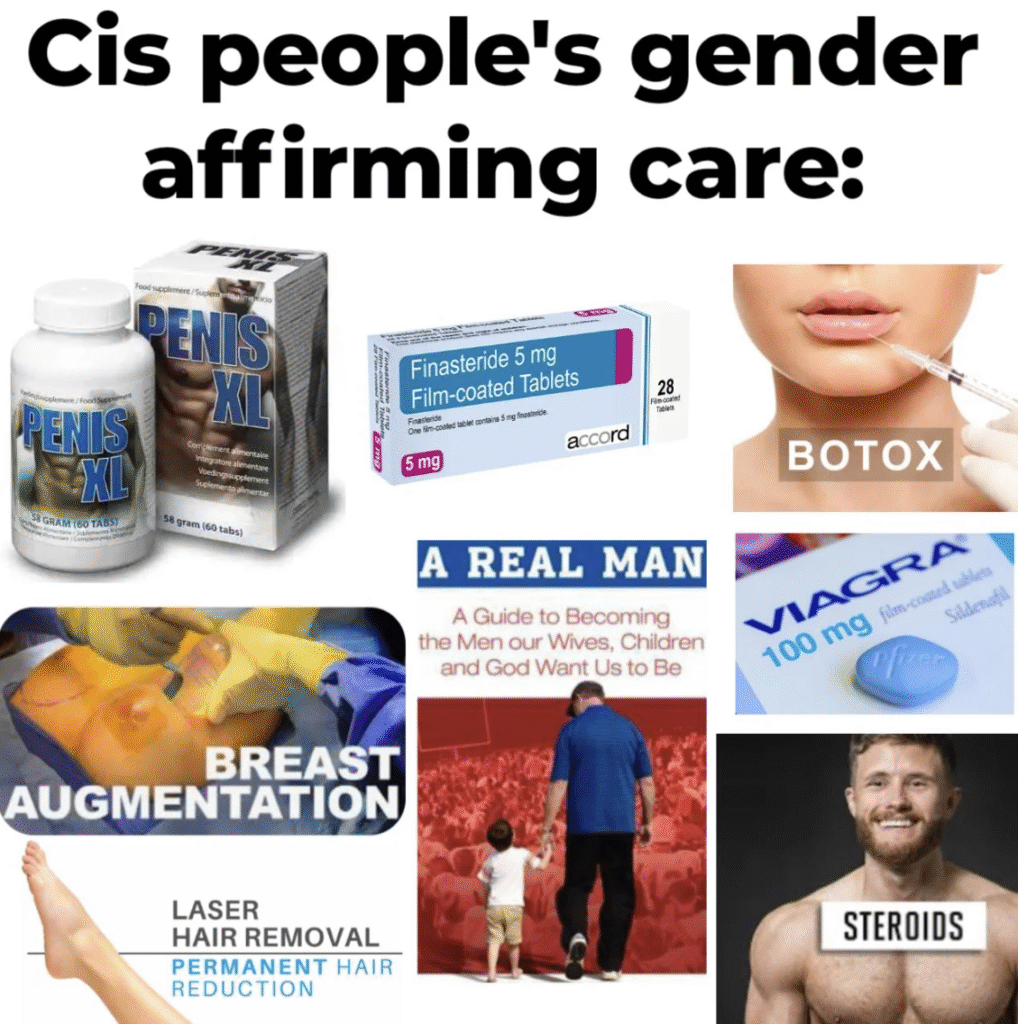
Q: “Trans athletes in sports. My Gen Z children don’t allow any room for discussion – athletes should be able to compete in the category that they identify with. But I have friends who are equally adamant that athletes must compete in the category of the sex they are assigned at birth. Typically these tend to be parents of girls who are concerned that trans girls have biological advantages. I want every human to have a safe, healthy space to flourish and achieve their potential. Cis gender girls need that, and trans athletes need that. -Gender – and sometimes sex! – are not binary. (I learned sooooo much from the RadioLab “Gonads” episode.) What are your thoughts?”
A: Well, here’s where I’m sure I’m going to lose some of you, but let’s get into it anyway. There have been at least three transgender athletes forced into a glaring spotlight in the past year. Do you remember their names? Do you remember what tournament they did or didn’t win? Does it keep you up at night? I ask this because I doubt it does bother you still, but I can guarantee you that each of these athletes lives were irrevocably damaged by our scrutiny and sensationalism. And here’s where I’ll really get spicy: I’ll remind us all that these are games. That’s it; they’re just games we play. The only lives on the line are those of these brave trans athletes, so please, think twice before you drag them through the mud all for the sanctity of a sporting match. Do you care as deeply about the sanctity of sports when it comes to doping? To bribery? To domestic abuse? When it comes to any of the countless other issues with plague our athletic culture? Why don’t we react with the same horror to a male athlete beating women as we do to a transwoman simply competing? In my opinion, this has never been about fairness, just as it was never a matter of fairness or sportsmanship to prevent athletes of color from competing, or to prevent cis women from competing. It’s simply the latest version of scapegoating run amok, and sports is an easy place for the media to get your goat. So I’m sorry, but at the end of the day my response to the questioning of trans athletes is simply… get over it. There’s no data at all to suggest they have any sort of unfair advance, while there are countless actual exploits being abused by their cis counterparts. And at the end of the day, it’s a game. If you can’t play nice, don’t play at all.
Now, for those genuinely, genuinely concerned about girls and women being able to compete in sports – a long fought for and still fought for right – then yes, we do need to be able to talk about this. For me, that conversation starts again by establishing why we play these games and why we lay significance on them. If it’s for the sake of play, teambuilding, fitness, and being our best, then it shouldn’t matter who’s on the team. And even if you’re wanting to make sure girls and women are able to earn scholarships and have viable careers in sports, still I’d tell you again, I don’t think transwomen are your enemies. The bulk of data we have at the moment suggests no statistical advantage for trans women, since the vast majority of trans athletes are well along in their HRT by the time they compete (meaning their hormone levels are within the traditional ‘female’ range). But sure, we don’t have a lot of data yet at all, so let’s keep track of that and, if we do find down the line that transwomen have a proven advantage, then yes, we should sit down and reassess. But for now we don’t have enough information to back those claims and, instead, we do have heaps of evidence that trans-exclusionary policies affect women of all backgrounds by introducing invasive gender testing and making it generally harder and harder for girls to compete. So let’s stick together on this one – I promise, none of us are transitioning just to steal your spot on the team.
none of us are transitioning just to steal your spot on the team
Q: “I think we’ve talked a bit about the issue of trans chess players and the can of worms it has opened to ask whether trans women have a biological or social advantage over cis women. Thoughts?”
A: We all know there is no biological advantage for a person of any gender playing chess. That idea is blatantly rooted in sexism and archaic ideas of women having inferior minds. No matter what genitals or hormone levels you came into this world left, I assure you they won’t make you better or worse at chess – only your intellect and practice can do that.
But, as far as a social advantages, those claims may have some grounding. If you were raised as a boy, you probably received encouragement as an analytical thinker. And I’ll be a little personal here: I’m a transfemme who grew up as a boy going to chess camp. I adored chess. I studied and competed regularly…until I hit puberty. As I came into my sense of self and gender, I became fearful of participating in any public event like a chess tournament…so I quit. It’s a regret that’s followed me the rest of my life, and – had I not had that fear of judgment – I surely would have continued playing competitively. So there are pros and cons to the social element of being transgender as a chess player, and it can cut one of ten thousand ways depending on each of our individual experience. At the end of the day though, I think most of us if not all of us would agree that we want people to be able to compete to the best of their ability regardless of social upbringing. And I think a much more productive use of our time would be focusing on uplifting girls and breaking down social barriers to chess rather than penalizing a tiny minority of the population.
Q: “I want to be very gentle and careful about this question. One tricky thing about watching a certain loved one’s transition has been the adoption of certain features of femininity that I don’t see as being positive. As a trans woman, this person is suddenly saying things like “I can’t lift that; it’s too heavy,” she talks constantly about clothes and hair and makeup, to the exclusion of interests that she had before her transition, like politics, sports, and philosophy. These things can be triggering for me, because I grew up in a family where my mom sometimes tells my nephews – WHO ARE CHILDREN – to lift things for me because I’m a woman, and I get soooooo frustrated with women friends (and my own mom) for eschewing important topics and occupying their time with ornamentation. So it’s just kind of painful for me to watch this person’s expression of womanhood take forms that to me seem like negative stereotypes. I wonder if part of this is a phase as she is figuring out how she wants to express femininity since she didn’t get a chance to figure that out in childhood and puberty, like I did? I want to be compassionate, see from her point of view, and to give the benefit of the doubt.”
A: Okay, I’d like to start just by acknowledging that I’m nowhere near close enough to this clearly very personal relationship to understand all its nuance. Here’s what I will tell you though. In all likelihood your trans loved one — she hasn’t been able to talk about her hair, her makeup, to be able to do anything put present and overperform masculinity her whole life. The permission to engage with femininity is probably new, a permission she had to grant herself, and the space between her true self, her inner womanhood and then those social expectations and stereotypes that she was also steeped in – that’s probably a brand-new labyrinth for her to find herself in. Remember how hard it was for you? How often were you told to talk about hair and makeup, but never sports or politics. Now envision the inverse – how exciting must hair and makeup suddenly seem!
Again, this is a particularly tangled web since it sounds like you’ve been bucking against and over the years I imagine, freeing yourself from a lot of these stereotypical trappings of femininity, whereas your trans loved one likely never ever had the chance to play in those waters. To you these things may feel tepid, restrictive and even oppressive, but to her it’s a whole new ocean of self to explore! Perhaps she’ll find her home in these waters and never return again to her former discussion of philosophy and politics…and if so, I hope you can support her in that space. But more than likely this is an exploratory phase for her, and in time she’ll find herself delving deeper into the complexities of her gender and discovering a more complete sense of self there.
So, my best suggestions for now are to encourage her expressions of the high-femme or stereotypical femininity while she’s still enjoying that space – will you love her any less if this is where she decides to stay? If not, then you’ve got nothing to fear. And if so, then it may be worth further unpacking your own relationship to these traditionally feminine interests. Why is it so bothersome? Embrace each other, give that benefit of the doubt, and when everything shakes out someday, I hope you’ll love each other all the same.
And lastly, I’ll just say that if you are particularly close and this pattern of behavior continues, then it’s probably okay to mention your feelings about these feminine, and arguably patriarchal social expectations she’s dabbling in. If it’s really distressing for you and this is a loving relationship, then I’m sure she’d want to know. Wishing you both lots of productive thoughts and conversations ahead.
Q: “How do you feel re: coming out to people upon meeting? Do you assume they know your pronouns?”
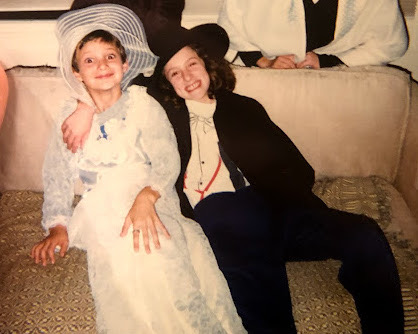
A: Thanks for this question question-asked. So I have very little hesitation coming out to people upon meeting them. I’m a visibly trans person and I love this about myself. Meanwhile a person I meet is likely to have one of the two most common responses: acceptance or rejection. Either way, I get know where I stand right away and can move along. As a nonbinary person I have some advantage here though – I’m seldom if ever hoping to pass for either binary gender since my default gender is considered queer, which is to say for nonbinary folks, we’re automatically outside the normative expectations of gender presentation; no one expects a nonbinary person to dress or talk or behave a particular way. A transman or transwoman might not have these same liberties; they’re more likely to be placed under scrutiny and have to navigate all the confusion of gender norms, like we discussed in our previous question.
As far as whether or not I assume someone knows my pronouns. No, I definitely try not to assume this. That said, as ‘they/them’ pronouns are an increasingly accepted neutral standard for people to use before learning someone’s pronouns, people do often assume correctly with me. Again, a nifty perk of being non-binary! That said though, I make a habit of introducing myself with pronouns 9 out of 10 times. It just sets a good precedent and takes away some of the awkward guesswork. Safe to say if I don’t tell someone my pronouns, it means I don’t plan on talking with them again.
Q: “What are some easy gender affirming things we can incorporate into our daily lives?”
A: So, since this was submitted as a question about the transgender experience, I’m going to answer first with some gender affirming things you can do daily for the trans people in your life. Use correct pronouns and practice. Speak up against transphobia when you see it. Read and watch and listen to trans creators who will keep expanding your gender imagination. Make trans affirming statements, advocate for LGBTQIA+ rights, and support the queer community around you. If you’re doing these things regularly, the trans people in your life are going to take notice.
But here’s the more interesting question for me though, and it’s a question I have for each of you listening: what are some ways you affirm your own gender? Question your own gender – even if the result if what you expect, you’ll probably find yourself more affirmed in that gender and more comfortable discussing it with others. Because again, there is nothing I want more than for everyone in our world to feel safe and confident and affirmed in their gender, for us all to have the freedom and courage to be ourselves, because I truly believe when we live as our authentic selves, all of us prosper.
And that brings us to the end of our episode. Before I go though, I want to say one last thing. Even if you’ve listened all this way and you still feel like you just don’t get it. Maybe you don’t know any trans people or maybe we make you uncomfortable. Maybe you were raised believing different things and you’re not sure those things will change. For those of you among us, I just want you to know this: being able to live as my authentic self, to be openly transgender, has saved my life, yes, and it’s also made me a better person. Not being trapped in that self-destructive cycle of trying to hide who I am means I’m able to show up more for the people I love. It’s made me a better friend, a better family member, and a better partner. I’m able to contribute more to my community, and my ability to do all this takes nothing away from you or anyone else. Transgender people only want to be our best, truest selves, and allowing us to do so safely benefits everyone. We are only asking for those same virtues any other American holds dear; for our freedom, liberty, and the right to pursue our own happiness.
Thanks for listening, and happy Pride!
when we live as our authentic selves
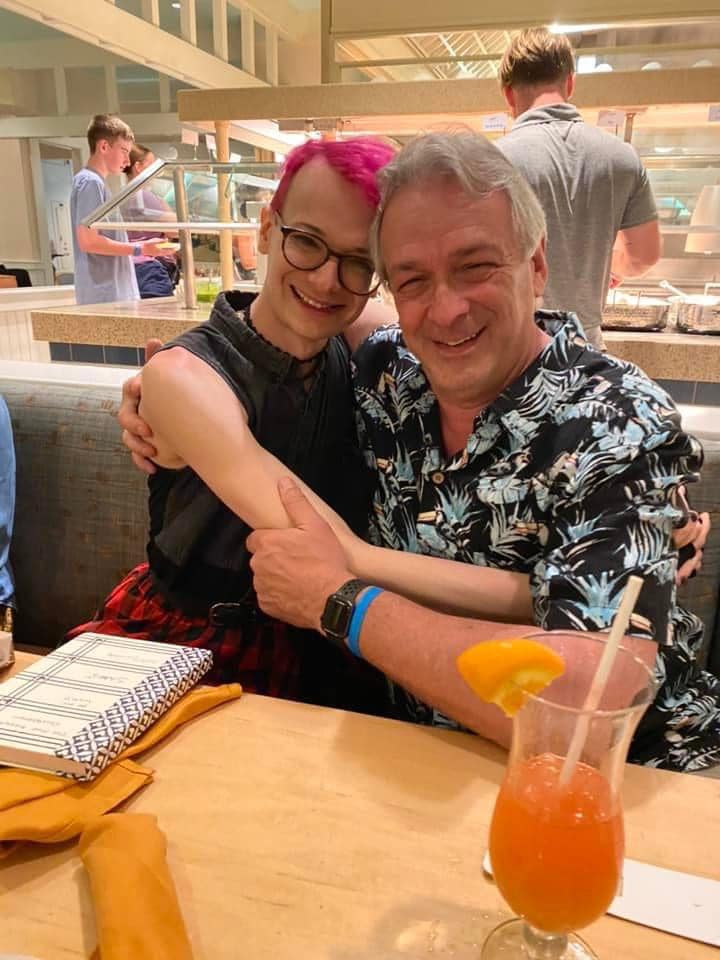
all of us prosper
Listen to the Episode
&
Share your Comments with us below!

